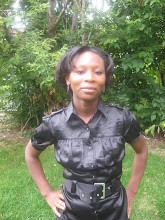I think this play focuses on a theme of malsculine prevelance over genuine femininity(whatever that is) where as in our other novels we've seen all our slightly masculine female characters fail or be villianized by society {side note: Is it the authors who victimize these characters or is it our modern day society? I think we are more focused of gender roles in our modern society than maybe authors such as Ibsen and Lorca wanted us to be. These men spoke out against these gender roles that we so strongly cling to today.}I mean in the other novels the more masculine characters always sufffered in some whether by losing their families or dying. In The House of Bernarda Alba, Adela the more feminine of the daughteers was a "martyr" because she stood up for love and wanted to be everything that is female and no one saw the power and difficulty that Bernarda held. To us she was the villian. And in Hedda Gabbler Hedda masculine nature led her to sucide and ruin while the feminie Mrs. Elvsted fell in love with George.
Lysistrata is different because in order to be sucessful the womyn have to abandon their femininity and focus all their efforts on appealing to the male ego. They have to "think like men" and take away what is most important to a man.
Also in saying that sex is something very masculine and that womyn enjoy it as much as men is Aristophanes saying that women are as masculine as men are?? Just throwin' some stuff out there.
I could be wrong in associating physical gratification (SEX) with masculine ideology. Isn't femininity all about feeling good. Maybe sex is more feminine than it is masculine?
There's a lot to think about.
Tuesday, November 11, 2008
"Bros before Hoes" One of the lesser known themes of Lysistrata
Posted by J'mag at 10:00 PM
Subscribe to:
Post Comments (Atom)

4 comments:
I'm not sure i understand. are you saying that based upon the tendency to be more masculine or a feminine, the woman would then convey a different theme? so that means that in lysistrata, the women use masculine strategies to force the men into a submissive role and to surrender to them?
they use masculine strategies by joining together to isolate them and force them to be lower and inferior to them?
then they control them by taking away what they enjoy?
i think that makes very good sense.
i'm with kwall on this one, what exactly are you saying here? after reading it again i think i get more of what you're saying and also by kwalls breakdown there it makes more sense in that the women were being masculine to get the men down but that really goes against the womens whole deal of trying to overcome them with womanness.
I think that the women in this play were very feminine, and displayed they're power in a feminine ways. Lysistrata says that the way to go about their plan is to be as femininely attractive as possible to drive the men crazy, and when the women threaten the men it is with traditional female-related household objects. I think this play agrees with the other two in its statements about masculine and feminine power, just in a more lighthearted way.
i'm slightly confused, but at the same time not. before reading this i didn't really catch how the other female character got power by being more masculine in other plays, while in this play the women were able to keep their femininity and instead used that as a tool to get their power. i like it.
Post a Comment